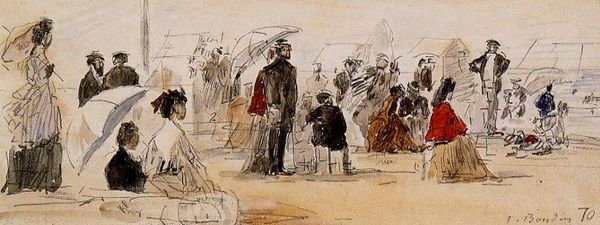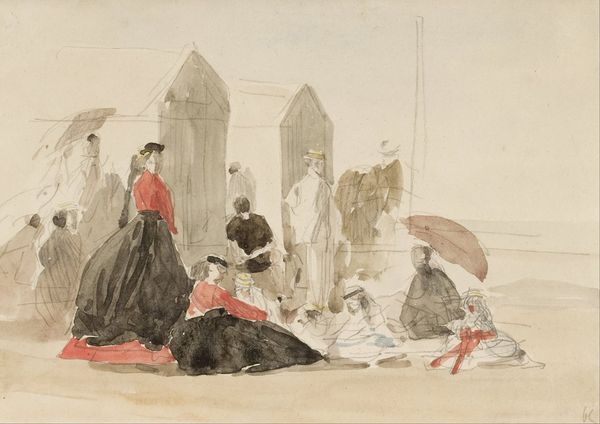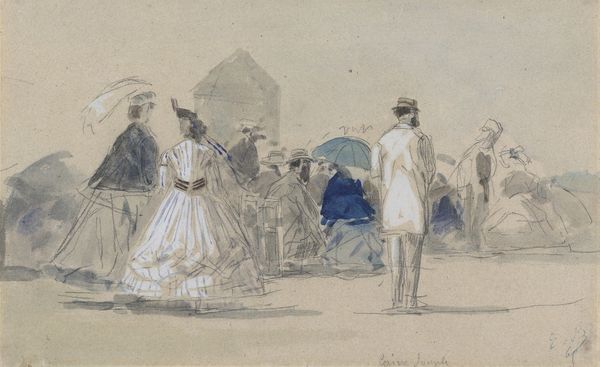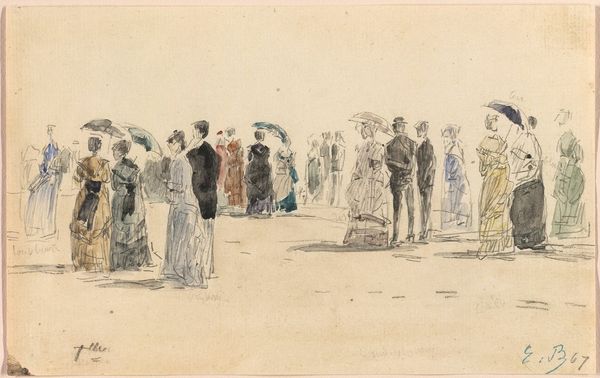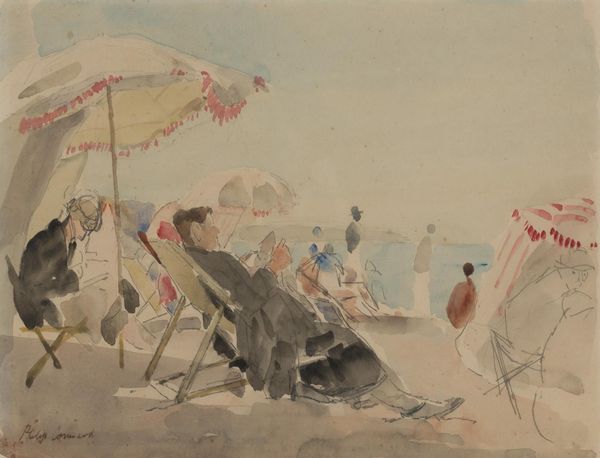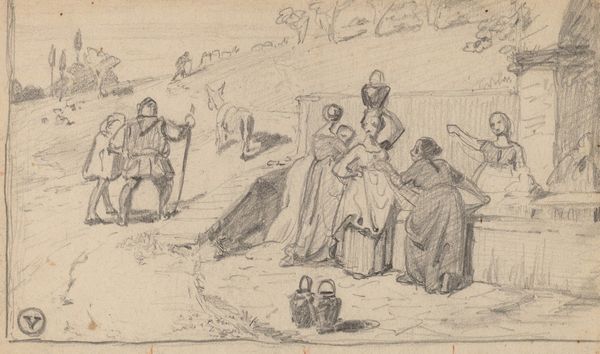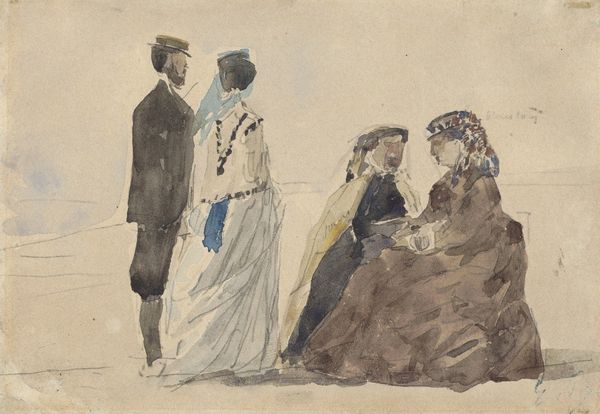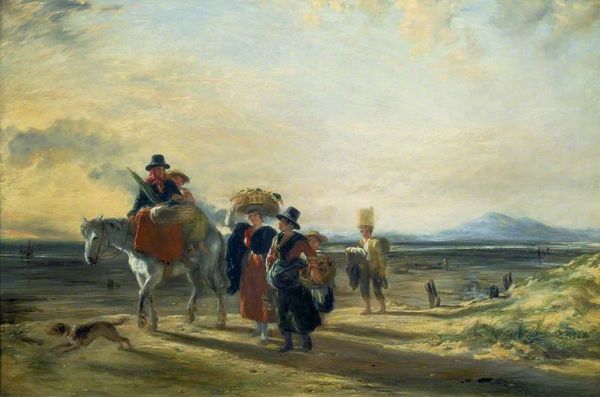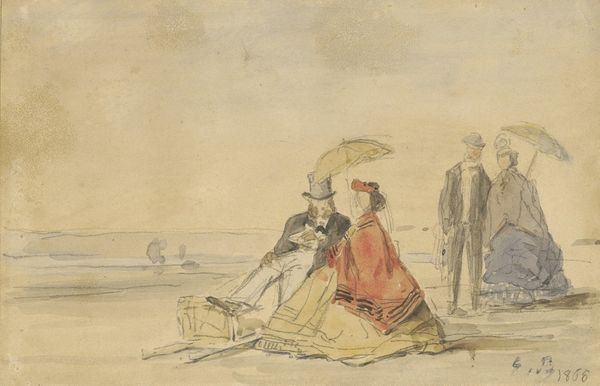
plein-air, watercolor
#
portrait
#
impressionism
#
plein-air
#
landscape
#
figuration
#
oil painting
#
watercolor
#
cityscape
#
watercolour illustration
#
genre-painting
#
watercolor
Dimensions: 27 x 17 cm
Copyright: Public domain
Editor: Looking at Eugène Boudin’s "Trouville," created around 1869, I am struck by the fleeting nature of the scene, almost as if the artist captured a momentary impression. Curator: It is fascinating how Boudin employs loose, almost gestural brushstrokes to render the figures on the beach. Notice how the composition guides your eye toward the horizon. Editor: Absolutely. But for me, it's the material reality of the beach itself, the sand and sea depicted with such evident haste, that really draws me in. I wonder, what kind of pigment mixtures allowed him to create such an effect in what appears to be watercolor and maybe some gouache? Curator: That's astute. Boudin’s approach prioritizes capturing the atmospheric conditions – the light reflecting off the water and the subtle variations in the sky. The figures almost act as visual cues reinforcing spatial depth. There's also a subtle narrative being constructed here with the positioning of certain subjects closer and some receding into the distance. Editor: For me it's less about pure depth and more about that rapid plein-air technique; what does that speed of creation communicate about labor and artistic choice in 19th-century beach town leisure, I wonder? It suggests a casualness belying intense labor to keep pace with rapidly shifting conditions! Curator: An excellent point. I see the materiality and the speed it allowed allowing Boudin to suggest transience as an essential element within the social life it represented. A meditation upon how fleeting social pleasures and moments can become within larger, temporal structures! Editor: Right. And those material and economic forces were enabling and constraining that class's leisure. Watercolor may have also provided greater opportunities to paint quickly and cheaply for audiences demanding speed and responsiveness in art making. Curator: True. This small work provides great insight into not just Impressionism, but also to understanding mid-19th-century aesthetic concerns about representing contemporary social realities. Editor: Indeed. A remarkable testament to how art's creation, and the economics behind the creation, captures something otherwise unseen.
Comments
No comments
Be the first to comment and join the conversation on the ultimate creative platform.


